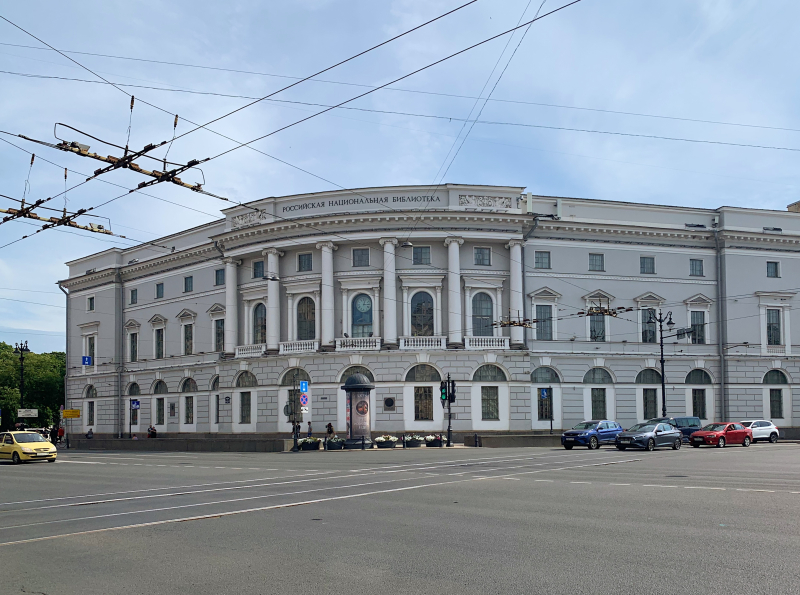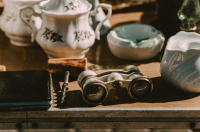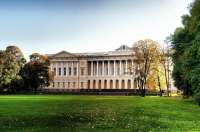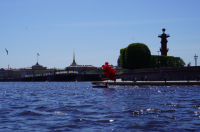The National Library of Russia (NLR) was founded in 1795 by Catherine II, who strived to follow the ideas of the Enlightenment. As one of the first public libraries in the country – and certainly the first of this scale – it was meant to support any and all on their quest for knowledge. Now listed among the world’s biggest libraries, the NLR still resides in one of its original buildings at the intersection of Nevsky Prospekt and Sadovaya Street – the edifice is hard to miss as you walk from the Great Gostiny Dvor. However, as the library accumulated more and more books, it has spread into several more buildings along the city, the most prominent of which is a round-shaped Constructivist creation on Moskovsky Prospekt.
General rules
- You can access all library buildings with a pass. To get one, foreign citizens need a passport with a visa or temporary residence permit and its translation into Russian.
- In summer, the library works according to a shortened schedule, which is available on the main page of its website.
- Among things you can’t bring to the library are books and backpacks! If you have any with you, leave them in the coatroom.
The old building (Ostrovsky Square)
By Catherine Zavodova
I don’t remember how I first heard about the NLR, but I do remember that I rushed to get my membership card right after an international forum I was volunteering at – and now my card forever captures me still in the forum’s uniform, with a green scarf over a white shirt.
For me, studying at NLR’s old building has always been something sacred. I’d come here after classes on the history of international relations to draw mind maps of world leaders through the ages. Later, I remember how my friend and I came here to cram for the history exam in whispers, so as not to disturb all the other agitated students around us. Most of my Bachelor’s course papers and a huge part of my thesis were completed here, too.
I think there’s just something about the atmosphere of the main reading hall, with its enormous windows (I particularly love the view in the fall), its calming quiet, the persistent smell of old books, and even its squeaky chairs. You can’t help but romanticize your studies there – or imagine yourself as a great mind about to make some fascinating discovery. There are many other halls in the building, too, but if you are coming to study, not work with a particular book, then the main hall has all you need: free Wi-Fi, power outlets, cozy green lamps, and, likely, at least a dozen other students busy with schoolwork all around you.
Tip 1: One drawback of the building’s biggest reading hall is that it tends to get really cold inside, so do bring a scarf or a cardigan if you are planning to sit there for long, especially in the colder seasons.
Tip 2: Bring a bottle of water and some library-friendly snack that you can eat at the cafeteria on the first floor. The cafeteria itself is rather small with a limited number of options, which leads us to…
Tip 3: Plan your visit. Ideally, it’s a couple of hours of productive work at a time – so that you don’t need to worry about getting cold or hungry. Once you are in, it will be a little hassle to get out and then in again, which is the perfect motivation to finish up everything you’ve set out to do quickly and efficiently.
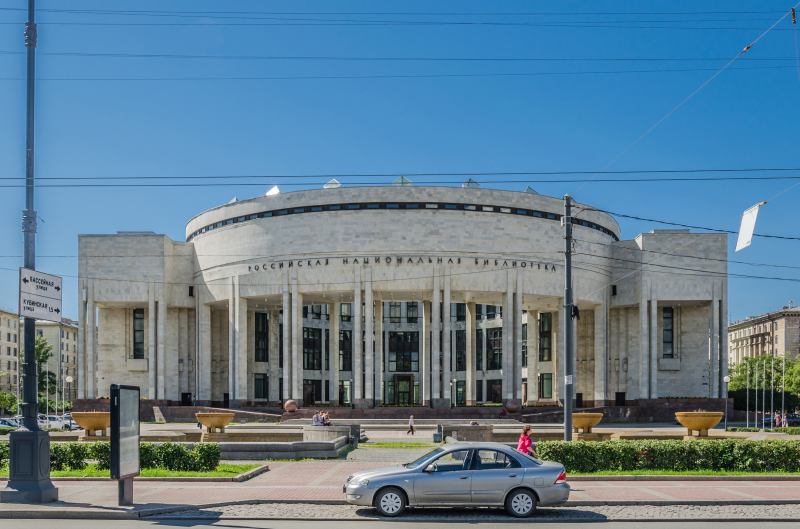
Credit: Alex 'Florstein' Fedorov, CC BY-SA 4.0, via Wikimedia Commons
The new building (Moskovsky Prospekt)
By Elizaveta Shevchenko
It was the first week of my first year at university when I was standing at the doors of the new building of the National Library. All because of our older and wiser roommate, who, just as timid freshmen moved in, candidly said: “There’s no place for studies here, get yourself a library pass.” Not sure about now, but back then it was more than true about the Interuniversity Dormitory, which had half as many tables in the room as residents. So, a huge library located within walking distance from the dorm seemed a perfect option.
I used to shelter here with the most daunting task, mostly term papers and my thesis, that required ultimate willpower. As you take a seat in one of the spacious reading rooms, you are surrounded by people so concentrated and quiet, it feels like a crime to get distracted from work! But you could speak a bit there, too. At the end of each semester, I teamed up with my groupmate, and together, on comfortable sofas of library halls, we spent hours reciting exam questions.
My favorite part about it is that you never have to fight for a seat. In fact, there are so many rooms, you could pick a new one every day of the week. The interiors are typically Soviet (although opened in 2003, the design is from the ‘70s) with the colossal marble staircase as a centerpiece, high ceilings, and windows almost as high. Somehow it’s hefty yet cozy. There're many details to scrutinize, like mosaics on culture and philosophy. On the underground floor, there's a cafeteria with a TV! I’d recommend you bring your own food, though, as the menu was quite humble.
Study-related tip: when tired of studies, get up and take a walk to the library halls. There’s always something on display, from exhibitions of student paintings to literary insights into Japanese culture.
Non-study-related tip: when it gets dark, the building fashionably lights up with all the colors of the rainbow, which makes it a popular photoshoot location.
